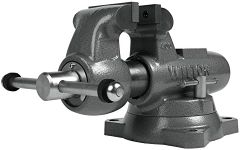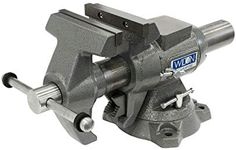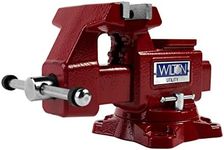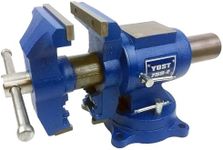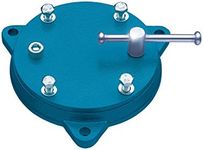We Use CookiesWe use cookies to enhance the security, performance,
functionality and for analytical and promotional activities. By continuing to browse this site you
are agreeing to our privacy policy
Best Bench Vises
From leading brands and best sellers available on the web.#2

IRWIN
IRWIN Record IW23ZR Fitters Vice, 4-1/2" / 115mm, 23ZR
View Product
#3
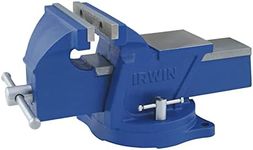
IRWIN
9%OFF
IRWIN Multi-Use Bench Vise, Heavy-Duty, 6-Inch (4935506), Grey
View Product
#4
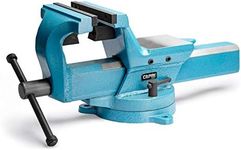
Capri Tools
Capri Tools 10517 Ultimate Grip Forged Steel Bench Vise, 7"
View Product
#5
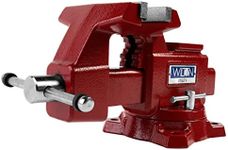
Wilton
Wilton Utility Bench Vise, 5-1/2" Jaw Width, 5" Jaw Opening, 3-1/4" Throat (Model 675U)
View Product
#6
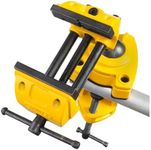
STANLEY
7%OFF
STANLEY MAXSTEEL Multi Angle Vice, Yellow/Black, 1-83-069
View Product
#7
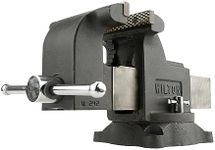
Wilton
Wilton WS6 Shop Bench Vise, 6" Jaw Width, 6" Jaw Opening (63302)
View Product
#8
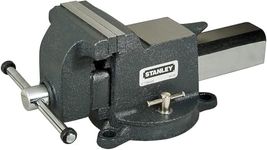
STANLEY
Stanley 183067 MaxSteel Heavy-Duty Bench Vice 125mm 5-inch, STA183067
View Product
#9
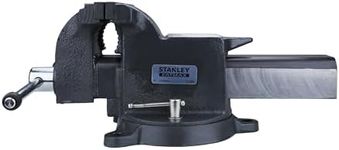
STANLEY
Stanley 183068 MaxSteel Heavy-Duty Bench Vice 150mm 6-inch, STA183068
View Product
#10
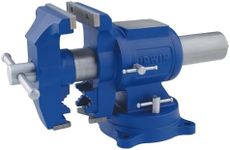
IRWIN
Record Irwin 4935505E Multipurpose Vice
View Product
Buying Guide for the Best Bench Vises
Choosing the right bench vise is crucial for any workshop or DIY enthusiast. A bench vise is a tool that holds your workpiece securely in place, allowing you to perform tasks like sawing, drilling, or sanding with precision and safety. When selecting a bench vise, consider the type of work you'll be doing, the size of your workpieces, and the space available in your workshop. Understanding the key specifications will help you make an informed decision that suits your needs.Jaw WidthJaw width refers to the size of the vise's jaws, which determines the maximum width of the workpiece it can hold. This spec is important because it dictates the size of materials you can work with. Jaw widths typically range from 4 inches to 8 inches. For small, delicate tasks, a smaller jaw width may suffice, while larger projects or heavy-duty work may require a wider jaw. Consider the typical size of your workpieces to choose the right jaw width for your needs.
Jaw OpeningJaw opening is the maximum distance the jaws can be separated, which affects the thickness of the workpiece you can clamp. This spec is crucial for accommodating various sizes of materials. Jaw openings can range from 3 inches to over 10 inches. If you frequently work with thicker materials, opt for a vise with a larger jaw opening. For smaller, more precise tasks, a smaller jaw opening may be adequate.
Throat DepthThroat depth is the distance from the top of the jaws to the base of the vise, which impacts how deep a workpiece can be held. This spec is important for ensuring stability and support for taller workpieces. Throat depths can vary from 2 inches to 5 inches or more. If you work with taller objects, a deeper throat depth will provide better support. For shorter items, a shallower throat depth may be sufficient.
Swivel BaseA swivel base allows the vise to rotate, providing flexibility in positioning the workpiece. This spec is important for tasks that require access to different angles or sides of the material. Swivel bases can rotate 360 degrees or have limited rotation. If your projects often require repositioning, a vise with a swivel base can be very beneficial. For straightforward tasks, a fixed base may be adequate.
MaterialThe material of the vise affects its durability and strength. Common materials include cast iron, steel, and ductile iron. This spec is important for ensuring the vise can withstand the pressure and force applied during use. Cast iron is durable and affordable, suitable for general use. Steel is stronger and more resistant to wear, ideal for heavy-duty tasks. Ductile iron offers a balance of strength and flexibility. Choose a material based on the intensity and frequency of your work.
